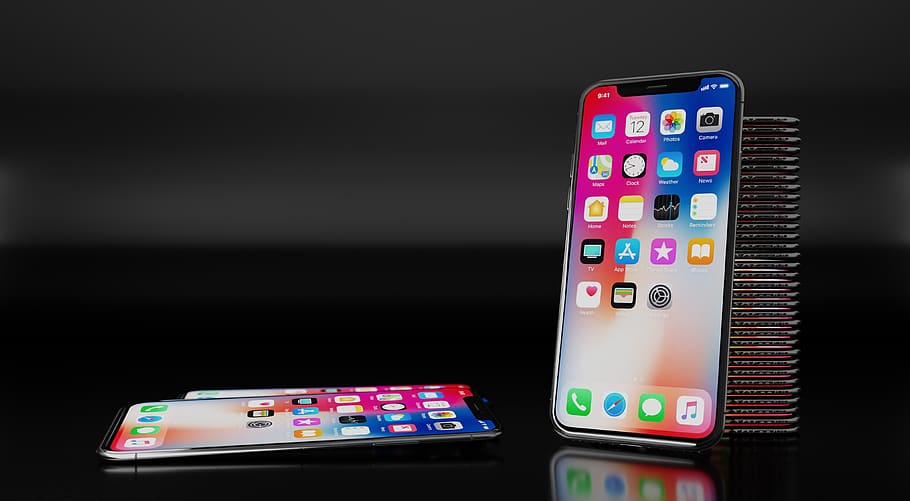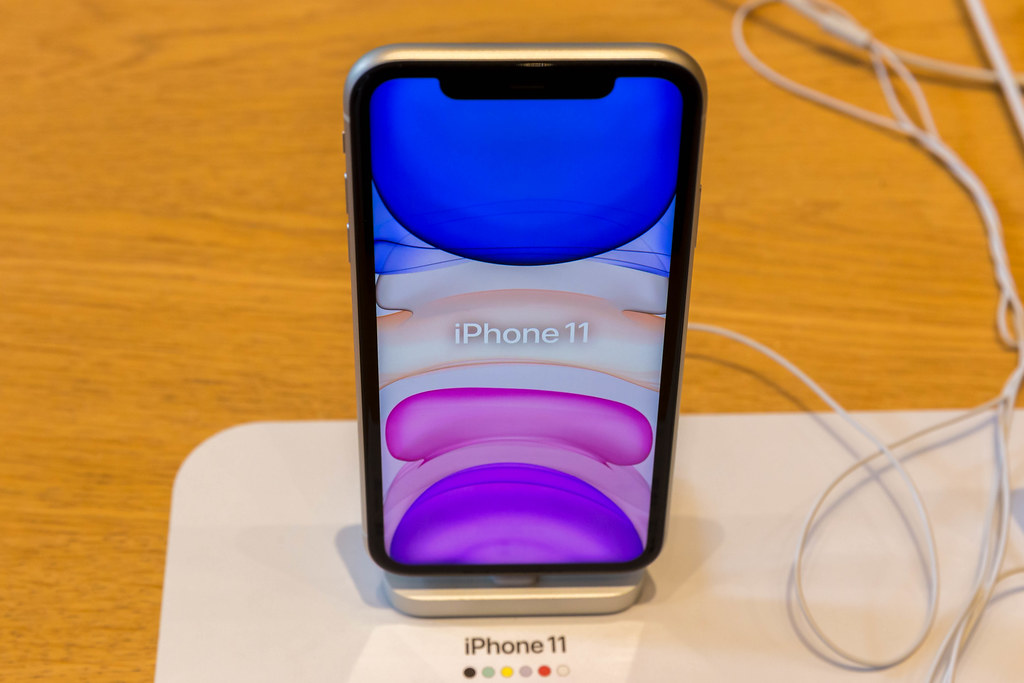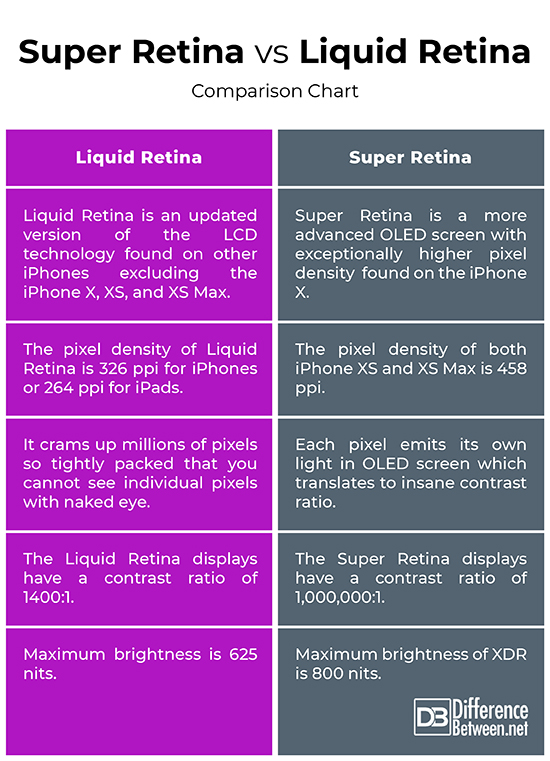Difference Between Super Retina and Liquid Retina
The iPhone has come a long way since its arrival in 2007. Steve Jobs unveiled the first iPhone on Jan. 9, 2007. It was an instant hit and the company sold over three million devices within the first six months itself. The iPhone was a project created by Steve Jobs to develop capacitive touch screen technology. The Apple’s iPhone aesthetics have evolved and gotten better since then, and today, the evolution of iPhone is one of the best success stories of all time. Moreover, the iPhone itself is one of the technological marvels of this technology-driven era. Apple has made some serious technological upgrades to its iPhone lineup over the years.
From significant software upgrades to improvements in camera to aesthetics design, battery life, and right down to displays, Apple’s iPhone has evolved dramatically over the years. But the one aspect where Apple had made significant strides is the display. The iPhone display sizes have increased exponentially over the years, from narrower screens to the plus-size displays to the OLED display in the iPhone X which Apple touted as the ‘Super Retina’ display. It was the biggest shift in design aesthetics of the iPhone since 2007. Then Apple introduced the iPhone XR with the all-new ‘Liquid Retina’ LCD display. We compare the two display technologies to see how impressive they are.
What is Super Retina?
The term ‘Super Retina’ came to life when Apple launched its most modish iPhone ever on Nov. 3, 2017 – the iPhone X, with an all-glass design with a Super Retina display. For the first time, Apple launched an iPhone with a 5.8-inch screen and it was the first smartphone to utilize OLED Multi-Touch screen technology. The iPhone X was the 10-year anniversary edition of the iPhone which marked the biggest shift in the aesthetics design with the Super Retina HD display and a notch that housed the front-facing camera. The term Super Retina was a marketing strategy by Apple to showcase their new OLED screen instead of the conventional LCD screens, which use backlight to illuminate their pixels. However, the Super Retina display uses organic light-emitting diode (OLED) technology which emits light through each pixel (with no backlight) to deliver an exceptionally higher contrast ratio and better resolution.
What is Liquid Retina?
On Oct. 26, 2018, Apple introduced the iPhone XR with the all-new ‘Liquid Retina’ HD screen, the most advanced LCD display in the industry. The iPhone XR features an LCD screen over OLED, which is just as good as the Super Retina, except it gives you a larger screen in a smaller build. It crams up millions of pixels so tightly packed that you cannot see individual pixels with your naked eye, even when you look very closely. It is a super high-resolution display with innovative engineering that allows us to stretch the display into the corners. The result is an all-screen design with the largest LCD display ever in an iPhone which still fits comfortably in your hands. The new iPhone 11 also boasts the Liquid Retina HD display.
Difference between Super Retina and Liquid Retina
Display Technology
– The Liquid Retina display is the most advanced LCD display technology in an iPhone ever. It is the Apple designed liquid crystal display which is just as good as the Super Retina designed to make the older LCD screens found on every iPhone models better for improved color accuracy. Super Retina is a high-density display that uses OLED technology which emits light through each pixel (with no backlight) to deliver an exceptionally higher contrast ratio and better resolution.
Pixel Density
– The Liquid Retina is a marketing term for the LCD display on the iPhone XR and the iPad Pro. It is basically the same LCD display found on other iPhones except for the iPhone X, XS and XS Max. The pixel density of Liquid Retina is 326 ppi for iPhones or 264 ppi for iPads. The Super Retina, on the other hand, is even higher pixel density OLED display found on the iPhone X, XS and XS Max. The pixel density of both iPhone XS and XS Max is 458 ppi, which accounts for sharper, more accurate images.
Contrast Ratio
– The Super Retina display in the iPhone X is a huge improvement from the iPhone XR’s Liquid Retina display. It sports a higher resolution at 2436-by-1125-pixel, which means more pixels are spread across the surface, which in turn, results in a higher contrast ratio, from a mere 1400:1 to an exceptionally higher 1,000,000:1. The Super Retina XDR has a contrast ratio of 2,000,000:1. The Liquid Retina displays have a contrast ratio of 1400:1, which is much lower than of Super Retina displays.
Super Retina vs. Liquid Retina: Comparison Chart
Summary
The Liquid Retina display is an Apple designed liquid crystal display which is an updated version of the LCD technology found on the other iPhone models except for the iPhone X, XS, and XS Max. It is a super high-resolution display with innovative engineering that allows us to stretch the display into the corners. The Super Retina display, on the other hand, uses organic light-emitting diode (OLED) technology which emits light through each pixel (with no backlight) to deliver an exceptionally higher contrast ratio and deeper blacks and higher pixel density.
- Difference Between Caucus and Primary - June 18, 2024
- Difference Between PPO and POS - May 30, 2024
- Difference Between RFID and NFC - May 28, 2024
Search DifferenceBetween.net :
Leave a Response
References :
[0]Image credit: https://live.staticflickr.com/65535/48897031766_06c9965124_b.jpg
[1]Image credit: https://p1.pxfuel.com/preview/954/194/415/iphone-x-iphone-x-apple-mobile-smartphone.jpg
[2]Costello, Sam. “What Is a Liquid Retina Display?.” Lifewire, Lifewire, 1 Nov. 2019, https://www.lifewire.com/what-is-a-liquid-retina-display-4772527. Accessed, 2 Jan. 2020.
[3]Miles, Stuart and Britta O’Boyle. “Apple iPhone history: Look how much the iPhone has changed.” Pocket-lint, pocket-lint.com, 31 Oct. 2019, https://www.pocket-lint.com/phones/news/apple/135231-the-apple-iphone-is-10-years-old-look-how-much-the-iphone-has-changed. Accessed, 2 Jan. 2020.



